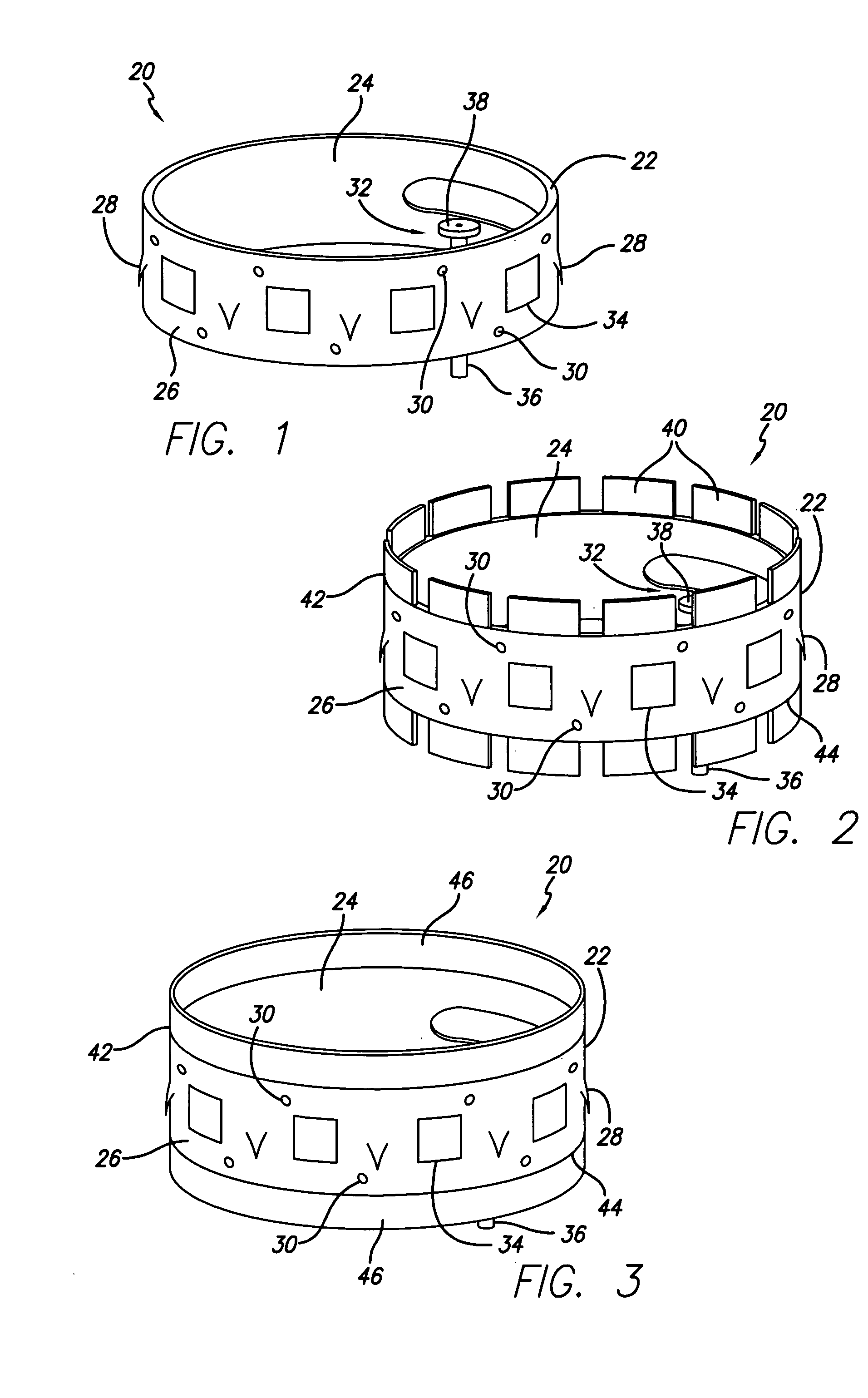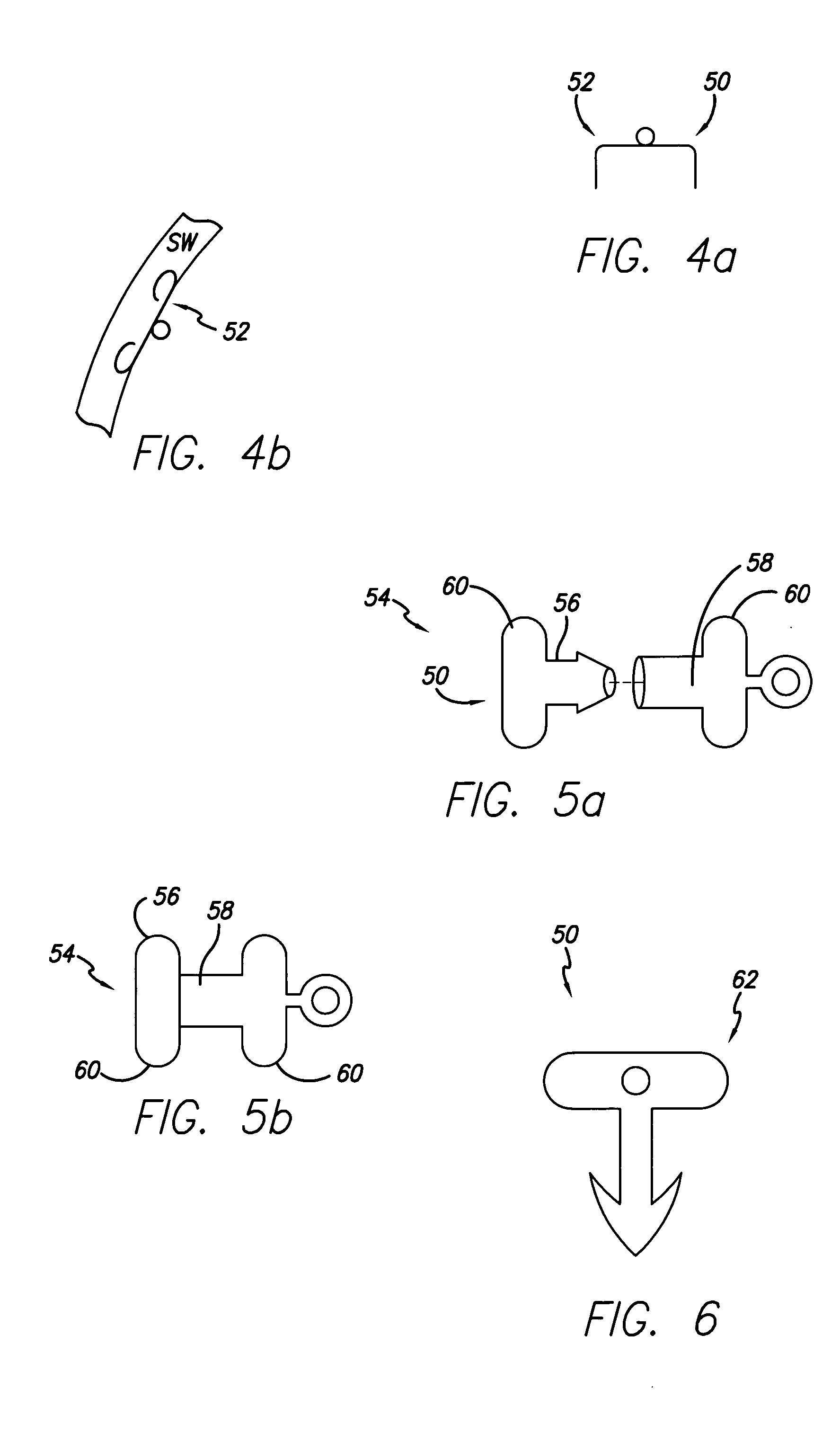Methods and devices for reducing hollow organ volume
a hollow organ and volume reduction technology, applied in the field of medical equipment, can solve the problems affecting the effect of weight loss, and affecting the effect of weight loss, and achieve the effect of reducing the volume of the stomach
- Summary
- Abstract
- Description
- Claims
- Application Information
AI Technical Summary
Benefits of technology
Problems solved by technology
Method used
Image
Examples
Embodiment Construction
[0046] As will be discussed in detail below, a method of reducing the volume of the stomach involves creating strictures or stomas within the stomach cavity. These strictures can be created through minimally-invasive placement of a mechanical structure for reducing the volume of the stomach via an esophageal approach. For ease of reference, the following embodiments will be described as being advanced transorally to the stomach, although the embodiments of the restricting devices can be used in conjunction with surgical techniques, such as laparoscopic tools to assist in visualization, placement or anchoring, and may be used within other hollow body organs as well.
[0047] In one embodiment, an intragastric band 20 is secured to the stomach wall and then tightened to form a stricture within the stomach. As shown in FIG. 1, the mechanical intragastric band includes a generally circular body 22 having an inner surface 24 and an outer surface 26. The outer surface may include hooks or b...
PUM
 Login to View More
Login to View More Abstract
Description
Claims
Application Information
 Login to View More
Login to View More - R&D
- Intellectual Property
- Life Sciences
- Materials
- Tech Scout
- Unparalleled Data Quality
- Higher Quality Content
- 60% Fewer Hallucinations
Browse by: Latest US Patents, China's latest patents, Technical Efficacy Thesaurus, Application Domain, Technology Topic, Popular Technical Reports.
© 2025 PatSnap. All rights reserved.Legal|Privacy policy|Modern Slavery Act Transparency Statement|Sitemap|About US| Contact US: help@patsnap.com



